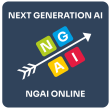AWS Cloud Technology Consultant Professional Certificate
University: Amazon
Courses:
-
Build your Subject-Matter Expertise
This course is available as part of the BDCTTA program. When you enroll in this course, you’ll also be asked to select a specific program. Learn new concepts from industry experts and gain a foundational understanding of a subject or tool while developing job-relevant skills with hands-on projects. Earn a shareable career certificate from Amazon Web Services.
-
AWS Cloud Technical Essentials
What you’ll learn
Describe terminology and concepts related to AWS services while articulating key concepts of AWS security measures and AWS Identity and Access Management (IAM.) You will learn to distinguish between several AWS compute services, including Amazon EC2, AWS Lambda, and Amazon ECS. Understand AWS database and storage offerings, including Amazon Relational Database Service (Amazon RDS), Amazon DynamoDB, and Amazon S3.
-
Providing Technical Support for AWS Workloads
What you’ll learn
Understand basics of troubleshooting in a cloud environment while Identifying resources and routes to assist with understanding and troubleshooting.
-
Developing Applications in Python on AWS
What you’ll learn
Introductory level Python programming and Python packages while having the skills and knowledge to explain the different roles in an organization building software.
-
Skills for Working as an AWS Cloud Consultant
What you’ll learn
Examine essential soft skills for solving business problems while describing the process of working with customers and how to use different soft skills.
-
DevOps on AWS and Project Management
What you’ll learn
Learn about the use cases for project management in business while understanding the differences between Agile and Waterfall methodologies.
-
Automation in the AWS Cloud
What you’ll learn
Automation in the Cloud can simplify processes, enable agility and scalability, and help you deploy faster. But how should you master these topics to enhance your career potential? The course kicks off by introducing automation in the cloud, comparing the differences between on-premises and cloud. We’ll answer why automation is so powerful and you’ll get hands-on by working with AWS CLI. Week 1 closes with automation with scripting by sharing examples of how automation helps and the benefits of using scripts. A focus on Automation isn’t complete with an overview of Infrastructure as Code. You’ll get introduced to Provisioning and Configuration Management and solve an automation problem with AWS CloudFormation. The instructors will then share some simple automation examples and how various tools can help you get the job done. In the course’s final week, we’ll cover the various AWS Services and features used for automation, how to scale resource management, and use the Systems Manager console and AWS Config for compliance.
-
Data Analytics and Databases on AWS
What you’ll learn
Key data types and structures. AWS services for the ETL process and hands-on skills for Amazon API Gateway and Amazon QuickSight.
-
Capstone: Following the AWS Well Architected Framework
What you’ll learn
This course provides a thorough review of the AWS Well-Architected Framework to help you understand how to make informed decisions about your architecture in a cloud-native way and understand the impact of design decisions. By using the Well-Architected Framework, you can understand the risks in your architecture and learn ways to mitigate them.
In the course, you’ll walk through each of the framework’s six pillars, which help you produce stable and efficient systems. The Operational Excellence pillar includes the ability to support development and run workloads effectively, gain insight into their operation, and continuously improve supporting processes and procedures to deliver business value. The Security pillar includes the ability to protect data, systems, and assets to take advantage of cloud technologies to improve your security. The Reliability pillar encompasses the ability of a workload to perform its intended function correctly and consistently when it’s expected to. The Performance Efficiency pillar includes the ability to use computing resources efficiently to meet system requirements. The Cost Optimization pillar includes the ability to run systems to deliver business value at the lowest price point. The final pillar (Sustainability) addresses the long-term environmental, economic, and societal impact of your business activities.


